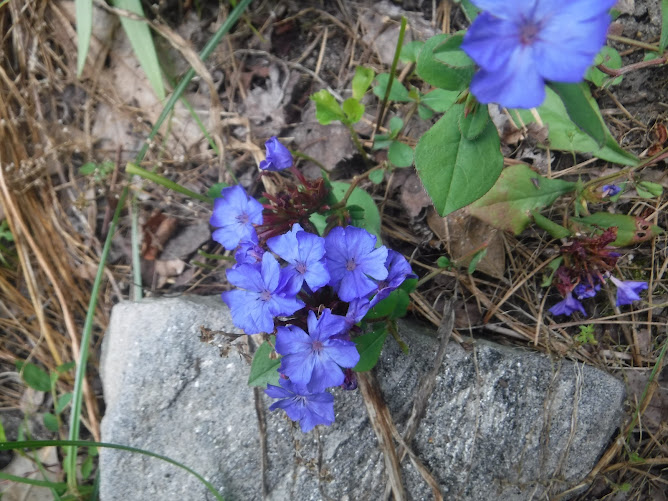July 1-15, 2023
Like Butterfly Weed, one can depend upon this fine ground cover being rather late to show up, each Spring.
From another year, but here is the 3-4 inch wide lemon yellow bloom of Opuntia humifusa, our native Prickly Pear Cactus.
After dealing with Woodchuck, Deer, Rabbits, bugs, with the clear understanding that some sorts might be bought in many a market, it is still immensely gratifying to see the vegetables thriving. As I may well have said, the Swiss Chard strangely failed last Summer, but looks great now. A heap will cook down to nothing. That one I seldom see in the market, and a favorite. We will use the Kale, but it is best after frost and goes far into Winter. The Beans, of sorts not locally available, have just bloomed. A few plants, to the upper left, of Purple Kohlrabi look like they might actually succeed. A lot of prep work in cooking, and we might hardly get more than one meal, but a great favorite I have not had success with for several years.
Monarda 'Gardenview Scarlet' again. Nicely contrasted with the Blue Spruce in the background.
Surely not one of the Groundhogs I trapped and carried away. I don't think they have that sense and I took those several miles away. The Havahart Trap is on loan, but when I get it, I will go through the usual routine. I bait the trap with apple slices, allow the animal to take them, bait it again after setting it to spring. Several squash plants lost their leaves, even though I have tried to keep the repellent spray applied after each rain. Not a total loss, and, at least, the most favorite munchables are safely behind a wire fence.
Lychnis chalcedonica again. My spelling always iffy. The Maltese Cross.
Aesculus parviflora, the most common Buckeye, and in two clones, one blooming slightly later than the other. Forming such a colony, now, that I will have to prune some out to reduce its successful spread. The species name, parviflora, refers to the individual blossoms as being small, parva, but the individual spears are quite spectacular. Somewhat cattywhompas, after being thrown about by last nights extreme thunderstorm.
Buddlea weyerianna, I think. One of the few yellow clones of this shrub. Beloved by the deer, unfortunately, and it had died to the ground in Fall, but is now 8 feet high.
The strong light violet color, Lavendar?, of the Chaste Tree, Vitex agnus-castus 'Shoal Creek' simply does not carry in this photo. This little tree competes, at the far end of the pool, with the Japanese Apricot. That tree is always appreciated for its Winter flowering. It did form small pale apricots, and I should have tasted one. Imagine they are probably inedibly sour.
The Wooly Betony, Stachys byzantina 'Helen Von Stein', is chosen for the silvery green foliage and that this clone seems never to bloom. The flowers are small and pink and on lanky, floppy stems. Had it for years, and suddenly it was not there in Spring. This is a replacement. Such a hardy plant that its loss is a mystery.

.JPG)




















.JPG)
Comments
Post a Comment